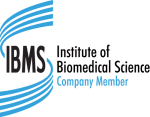Article of Interest (Coagulation) -The population pharmacokinetics of R- and S-warfarin: effect of genetic and clinical factors.
An excerpt from the paper:
AIMS: To develop population pharmacokinetic models of both R- and S-warfarin using clinical and genetic factors and to identify the covariates which influence the interindividual variability in the pharmacokinetic parameters of clearance and volume of distribution in patients on long-term warfarin therapy.
METHODS:
Patients commencing warfarin therapy were followed up for 26 weeks. Plasma warfarin enantiomer concentrations were determined in 306 patients for S-warfarin and in 309 patients for R-warfarin at 1, 8 and 26 weeks. Patients were also genotyped for CYP2C9 variants (CYP2C9*1,*2 and *3), two single-nucleotide polymorphisms (SNPs) in CYP1A2, one SNP in CYP3A4 and six SNPs in CYP2C19. A base pharmacokinetic model was developed using NONMEM software to determine the warfarin clearance and volume of distribution. The model was extended to include covariates that influenced the between-subject variability.
CONCLUSIONS:
Our analysis, based on exposure rather than dose, provides quantitative estimates of the clinical and genetic factors impacting on the clearance of both the S- and R-enantiomers of warfarin, which can be used in developing improved dosing algorithms.
Reference:
Lane S, et al, Br J Clin Pharmacol. 2012 Jan;73(1):66-76. The population pharmacokinetics of R- and S-warfarin: effect of genetic and clinical factors.


